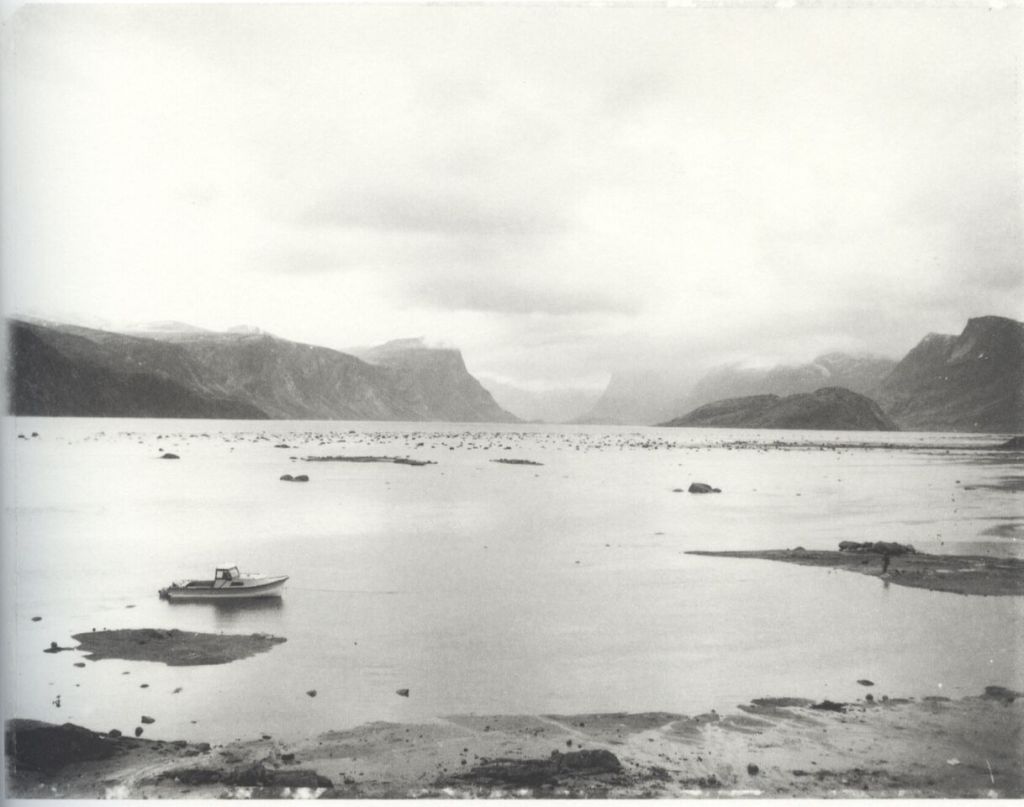Review from Photography Blog by Elin Spring
By Contributing Writer Suzanne Révy
Last month, I spent several days with my son on the road to drop him off at college. It is my hope that he meets inspiring and influential professors to teach, challenge and mentor him. If his experience is anything like mine, he will carry the ideas he learned in college with him into his adulthood. With the return to a new school year, it seemed a good moment to look at recently published monographs by artists alongside books by mentors each artist had. LaToya Ruby Frazier’s powerful The Notion of Family and one of her teachers’ books, Doug Dubois’ My Last Day at Seventeen create an impressive dialog about documentary traditions in photography when viewed side by side. The second artist, Jungjin Lee, who worked as an assistant to Robert Frank while earning her Masters at NYU, presents an elegant monograph called Everglades. It bears striking similarities to a somewhat lesser known Robert Frank work published several years ago called Pangnirtung.
In the opening pages of LaToya Ruby Frazier’s The Notion of Family, we learn she was born and grew up in Braddock, Pennsylvania about nine miles outside Pittsburgh, which was home to Carnegie’s first steel mill. Her mother and grandmother described this largely African American suburb as an economically thriving place in the past, but by the time Frazier’s generation arrived, mills were closed and businesses shuttered. The only restaurant in town was a hospital cafeteria. The B&W images move from intimate portraits to aerial views of vast industrial complexes, to fading signs and urban decay punctuated with brief, written autobiographical notes. Her words deepen our understanding of her family’s relationship to the heavy industry that surrounded them, and how it shaped the family’s bonds. She writes that her grandmother, “internalized the idea that Black women aren’t supposed to cry; they’re to remain silent and endure suffering.” And about a step-grandfather, “Gramps worked hard labor in high temperatures” she continues, “Once hard labor consumed his body, it was discarded and thrown away.” She further reveals, “Gramps died on his bed on Thanksgiving. Family secrets, hidden histories, and constant silence defined our coexistence.”
A series of compelling self-portraits in abandoned interior spaces follow those words, and convey to this viewer a sense of frustration with familial secrets. Deeper in the book, we learn and see more of the town’s industrial pollution and the physical and emotional toll her family paid. Frazier briefly describes her own struggle with identity as a teenager through a series of portraits made in collaboration with her mother. And she describes the negative impacts of foreign wars and incarceration rates on African American families in the region through simple and direct writing. Physical and psychological wounds run deep in her community, and yet the local hospital closed in the mid-nineties, taking hundreds of jobs and beds too far away to reach for many in Braddock. This work reveals how the industrial and healthcare industries discard what they call “human capital.” It is a deeply personal point of view, and is a far more potent look at rust belt economics than can be conveyed, as it so often is, by outsiders. She stated in a TED talk, “through reclamation of our narrative, we will continue to fight historic erasure and social and economic inequality.”
Frazier states in an interview with Dawoud Bey at the back of her book, “Doug (Dubois) taught me the difference between making and taking photographs when addressing the abject, aging and loss.” Dubois is probably best known for his book, All the Days and Nights which explores his family and their relationships to each other through physical and psychological trauma, estrangement and aging. It is an intimate and moving work, but is presented as a strongly sequenced series of images that pays homage to traditional documentary photography. In a more recent book, My Last Day at Seventeen, Dubois introduces elements of fiction to a series of images of teenagers made in a small town in Ireland called Cobh. Similar to Frazier’s pictures, the images presented here are made in collaboration with his subjects. Initially, Dubois met the young people through a residency at the Sirius Arts Centre in Cork, and he returned each summer over a period of five years to photograph.
The teenagers live in a housing estate called Russell Heights which features softly colorful buildings and walls and the photographs are bathed in beautiful summer light, yet there’s toughness in the expressions of his subjects and around the edges of the neighborhood. The book features handsome portraits along with several compelling tableaux which are all the result of a cooperative performance between subject and photographer. Interspersed through the book are short comic strips written and drawn by Patrick Lynch, a Dublin based artist which show brief scenes between a boy and girl. In the end, Dubois transcribes an argument he had with one of his subjects, Eirn, who objected to the use of a particular picture. It underscores the trust he built with this community, and though this work should be understood as a fiction, it is truthful to the rhythms of the place and the emotionally rocky transition through the teen years into adulthood. It’s interesting to note, that one of Dubois’ mentors was the late Larry Sultan who strove to redefine ideas around the documentary nature of photography; Frazier and Dubois have added to that dialog.
Vastly different in content, but no less compelling is Jungjin Lee’s sublime Everglades. Strongly horizontal and panoramic in shape, the reader will intuit that a gem of a book will emerge from its slipcase. And indeed, it is. The gesture of a bird in flight just over the tall grass on the cover is mysterious, and opening the book reveals an unusual binding that gives the impression of a simple folio containing lovingly crafted hand-made prints. The book’s reproductions are on a delicate paper, and the images include the deckled edges of the original prints. This elegiac and meditative work carries the reader through a series of diverse landscapes in the Florida Everglades. There are no people depicted, but several images of trees have the gestural quality of the human form, and more than a few path pictures offer the reader a psychological space to enter the landscape. The use of triptychs and gatefolds offer a visual abstraction through light and dark tones without obscuring the essence of the place, and images with magnificent birds flying through the swamps display a reverence for the non-human habitants. Not traditionally documentary in her approach, the pictures are an emotional and expressive interpretation of a fragile ecosystem.
In researching the book, I learned that Lee had worked as an assistant for Robert Frank while she was in graduate school. Best known for his seminal work, The Americans, Frank is less well known for his landscapes. Nonetheless, Jungjin Lee’s book reminded me of one by Frank that was published six or seven years ago called Pangnirtung. It was the result of a series of Polaroids Frank made on a trip to the northwest territories of Canada in 1992. Like Lee’s work, there is a reverential and spiritual quality to these quiet landscape pictures, and the book has the feel of a travel diary.
We are given locations in captions and he opens with a vista of Pangnirtung Harbor featuring a bay and distant mountains, a fishing boat and one small human figure. We then travel along a fjord and through the airport. He writes briefly about his five day stay with friends, and the language that is spoken here. The book contains images of the exteriors of the pre-fabricated homes of the Inuit people who live there, offering glimpses through windows. Some reflect the landscape, others reveal expressive tastes in window treatments from the Canadian flag to a roaring tiger. One window blends a reflected landscape with a still life of kitchen utensils. He concludes with a series of graveyard images marked by simple white crosses. The final image, “End of the Pangnirtung Road System” looks back over the journey from the bay, to the village to the cemetery. Preferring a matter of fact quality of printing, the black and white images emphasize the austerity of the place, yet there’s a warmth to Frank’s curiosity through his wanderings. Art never springs from a vacuum; following the visual thread from Lee’s images made in Florida to Frank’s final glance at a remote northern village bring two very different places into harmony.
Suzanne Révy is a fine art photographer who creates visual diaries of her family’s life and is a Contributing Writer to What Will You Remember? Earning her BFA from the Pratt Institute and MFA from the New Hampshire Institute of Art, Révy has worked as Photography Editor at U.S. News & World Report and Yankee Magazine and has exhibited her work at museums and galleries throughout New England and in New York. Révy is currently on the faculty at the New England School of Photography and a Board Member of the Photographic Resource Center in Boston.
The Notion of Family
By LaToya Ruby Frazier
with essays by Dennis C. Dickerson and Laura Weller
Interview by Dawoud Bey
Aperture, 2016
http://aperture.org/shop/frazier-notion-of-family-pb
A solo exhibition of LaToya Ruby Frazier’s The Notion of Family is on view until November 18th, 2017 at the Silver Eye Center for Photography in Pittsburgh, PA. For more information, go to: https://www.silvereye.org/onview/
My Last Day at Seventeen
by Doug Dubois
Illustrations by Patrick Lynch
Aperture 2015
http://aperture.org/shop/dubois-my-last-day-at-seventeen-books
Everglades
by Jungian Lee
Nazraeli Press, 2016
http://www.nazraeli.com/complete-catalogue/jungiin-lee-everglades
Pangnirtung
by Robert Frank
Steidl, 2011
https://steidl.de/Books/Pangnirtung-0623334855.html
Feature Image: “Mommie, 2008” (Detail) by LaToya Ruby Frazier from the book The Notion of Family.





















